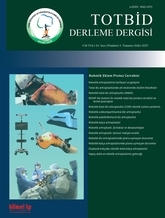
Developmental dysplasia of the hip (DDH) is a congenital condition characterized by structural abnormalities of the hip joint, frequently leading to secondary osteoarthritis. Total hip arthroplasty (THA) is an effective treatment in symptomatic DDH cases; however, the procedure is technically demanding due to significant anatomical variations. Robotic-assisted surgical systems have recently emerged as a promising solution to overcome these challenges. This review comprehensively evaluates the advantages of robotic-assisted THA in dysplastic hips. Robotic systems offer increased accuracy in component positioning, anatomical reconstruction of the center of rotation, improved limb length equality, reduced surgical complications, and minimized soft tissue damage. Additionally, they shorten the learning curve and facilitate procedural standardization. Despite these benefits, there are several limitations, including high costs, insufficient femoral component support, and a lack of long-term clinical data. In conclusion, robotic-assisted THA represents a promising advancement in the surgical treatment of dysplastic hips. Nevertheless, further technological development and large-scale, long-term clinical studies are essential to validate its efficacy and support wider adoption in clinical practice.